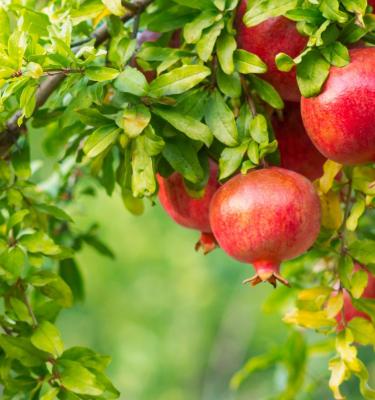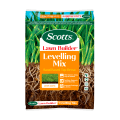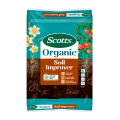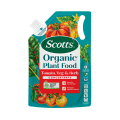

How to grow & care for pomegranate
Pomegranates (Punica granatum) are heat-loving trees, native to the Middle East, that grow well here in Australia. The bright, ruby-coloured jewels inside the fruits add wonderful pops of flavour to cooking and salads.
Pomegranate trees can be grown as a tree or hedging shrub, you’ll find bare-rooted plants from late autumn to spring or potted plants during the warmer months at your local nursery or garden centre.
Top 4 steps to growing pomegranates
- Choose a full sun position, sheltered from strong winds, or grow a dwarf variety in a large pot.
- Pomegranate fruit will taste sweetest in areas with hot, dry summers.
- Your best crops of pomegranates will begin 5-6 years after planting, depending on the variety
- Harvest pomegranates from March to May when the fruit is bright orange-red.
Shopping List
- A pomegranate tree
- Scotts Osmocote Compost Premium Soil Improver
- Scotts Osmocote Controlled Release Fertiliser: Citrus & Fruit
- If growing in pots, Scotts Osmocote® Citrus & Fruit Potting Mix
- Garden spade
- Mulch
- Secateurs
- Wildlife safe crop protection netting
Prepare
- Pomegranates trees prefer a full sun spot in a well drained soil
- Prepare the soil for planting by digging a hole that’s twice as wide as the root ball of your tree and the same depth.
- Loosen the soil at the bottom of the hole and mix Scotts Osmocote Compost Premium Soil Improver and Scotts Osmocote Controlled Release Fertiliser: Citrus & Fruit through the original soil.
- If your soil is clay, mix gypsum through the soil at the bottom of the hole
Planting pomegranate in the garden
Growing from bare-rooted or potted trees
Bare-rooted pomegranates trees can be purchased and planted in late autumn or winter. Potted pomegranates can be purchased year round, but avoid planting them in the peak of summer.
Plant your pomegranate tree at the same depth it was in the pot or if bare-rooted make sure any graft on the truck is well above the soil surface. If needed create a mound in your prepared planting hole to sit the root ball on so it’s at the correct height.
Add a stake to support bare-rooted trees at planting - this can be removed once the roots have taken.
Firm down the soil around the roots of your newly planted pomegranate tree and water in well. Top dress around the tree with an organic sugar cane mulch (but avoid touching the trunk) to suppress weeds and retain moisture.
Planting in pots
Choose dwarf or grafted pomegranates to grow in pots. Find a pot or container with good drainage that is at least 40-50cm wide and the same deep. An old half-wine barrel with drainage holes added is an ideal size. Fill your pot with a premium potting mix like Scotts Osmocote® Citrus & Fruit Potting Mix before planting your bare-rooted or potted pomegranate tree.
Firm down the soil around your newly planted tree in the pot and water it in a well to settle its roots in.
Mulch the top of the soil in the pot to retain moisture and ensure the pot can be easily watered during the summer months.
Harvesting pomegranate
Pomegranates are ready for harvest anywhere from March to May, when the fruits colour depends. Use secateurs to cut the fruits from the tree to avoid damaging the skin. Once harvested pomegranates will not ripen off the tree, so pick each fruit as it ripens. Fruits can split if there is a lot of autumn rain or humidity - if this happens the jewels inside the fruit are still edible - but the fruit should be removed as soon as possible from the tree to prevent it rotting.
You may need to securely net your trees to protect the crop from hungry birds and other animals. Once the fruits have formed use a wildlife safe, 4mm hole or smaller white netting that’s pulled tightly over the tree and secured around the truck or set up a frame structure over the tree so you can easily place the net over this.
Pests & Diseases & General Care Advice
If Queensland Fruit Fly are a pest in your area you may need to net with insect exclusion netting once the fruit have started to form.
Lightly prune pomegranate trees after harvesting the fruit, taking care not to remove too much of the mature growth because they fruit on this wood. Remove any suckers that appear from the base of the tree or below any graft.
Fertilise in spring and again in autumn with Scotts Osmocote Controlled Release Fertiliser: Citrus & Fruit.



